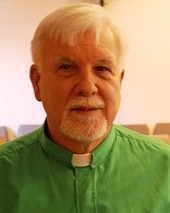Spiritual Ecology and the Middle Ground
For several years, I have viewed environmental organizations as spiritual communities, whose spiritual practice is environmental activity and/or Earthcare. I listened to webinar presenters from environmental groups, and I find deep faith commitments comparable to my own nurtured the in a hybrid Buddhist Christian spirituality. I have tried the notions of spiritual ecology in a lecture to graduate studies in Environmental Studies at Antioch University. When I have suggested to interfaith groups that we might include environmental activists at the table, they have rejected such proposals. What I propose an inclusive shift in our thinking what spirituality and a new ecumenism. .
Anthropologist Leslie Sponsel uses “spiritual ecology” to recognize the interweaving of nature and spirituality. Spiritual ecology” refers to “the diverse, complex, and dynamic arena of intellectual and practical activities at the interface between religions and spiritualities on the one hand, and, on other, ecologies, environments, and environmentalism.” (Spiritual Ecology, xiii). Spiritual ecology allows for an inclusion of an open-ended, non-modern notions of ecology of original peoples as well as scientific and theological knowledge of nature. This allows for respect of peoples’ wisdom who lived with the land for generations as well as scientific understanding of the Earth. It may preclude clergy dismissing the spirituality of environmentalists or environmental scientists or anthropologists rejecting indigenous people as the “first ecologists.”
Spiritual ecology is inclusive of religiously motivated environmentalism and environmentally motivated spirituality. Spirituality is a more inclusive description than religion, for many outside of institutional religion, who describe themselves, as “spiritual but not religious.” Spiritual ecology allows for a middle ground where religious folks, whose spiritual practice lead to environmental action, meet fellow travelers, whose environmental work fosters a spirituality in nature. As I listen to the stories of environmentalists, I hear comparable stories of faith gestalt, albeit different and simultaneously similar to people of faith. There is a common ground of shared environmental action and spiritual practice. I flashback to similar discoveries as I engaged in the Christian-Buddhist dialogue and shared practices years ago.
Spiritual ecology becomes an integral framework for all those people who do not conceive the spirituality inseparable from nature and interwoven into an organic natural unity. There are variety of paths to that common middle space of ecological spirituality, and it has allowed me to identify environmental organizations as “climate churches” and environmental spiritualities as sharing ecological spiritual practices. Are environmental communities the post-modern church of the 21st century? If so, then we need to engage in a new ecumenism of Earth spiritualities. Finally, the Spirit draws together networks of peoples, environmental and spiritual, indigenous and non-indigenous to defend the Earth. The North American indigenous prophecy that multiethnic “Warriors of the Rainbow” will arise up “to make the Earth green again,” gives me up that indigenous and non-indigenous peoples will form the Warriors of the Rainbow to protect and heal the Earth. Maybe we can a step forward in expanding the paradigm of spiritual ecology as a new ecumenism.
